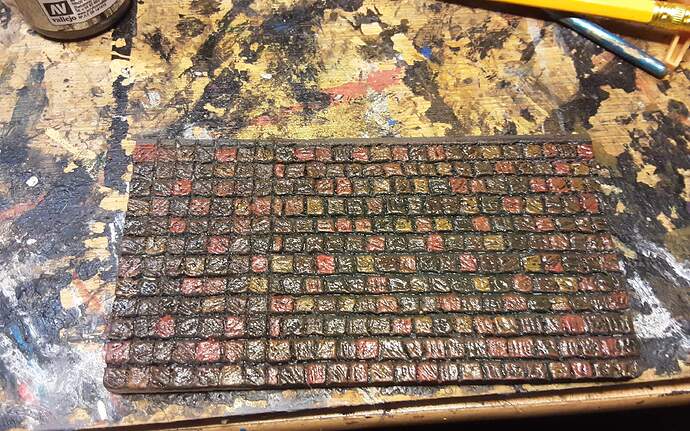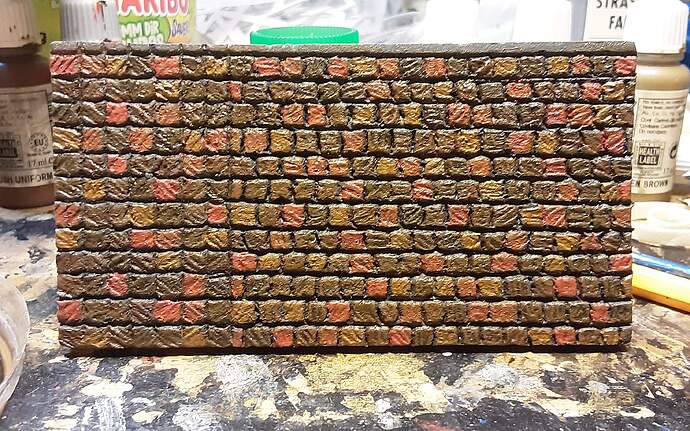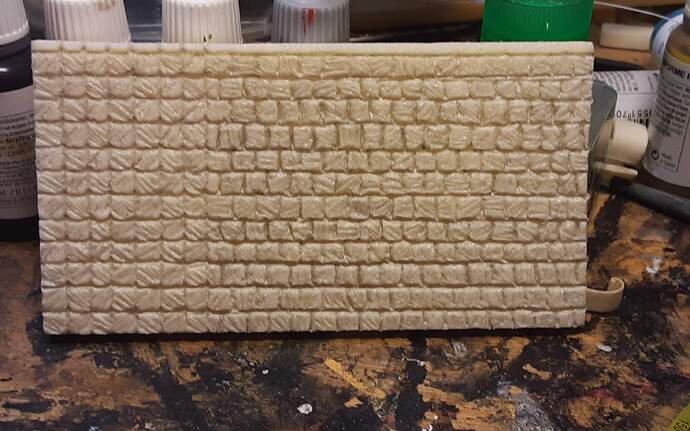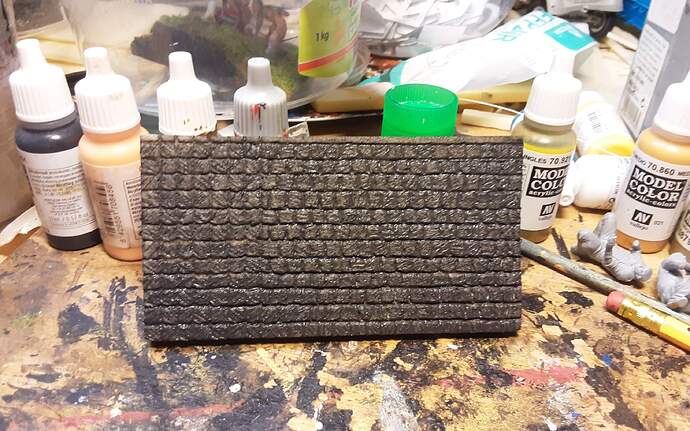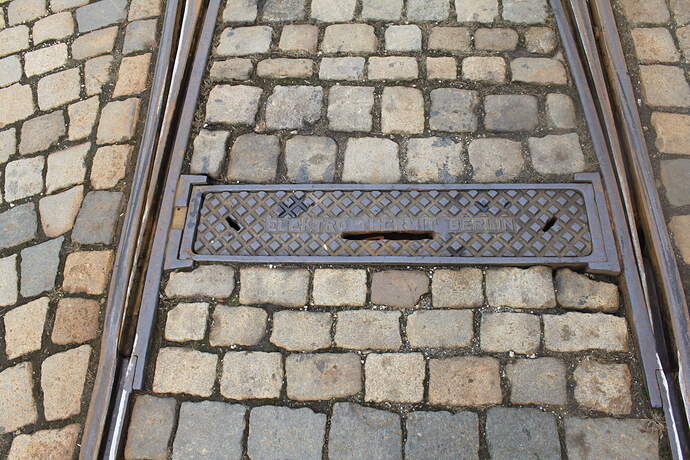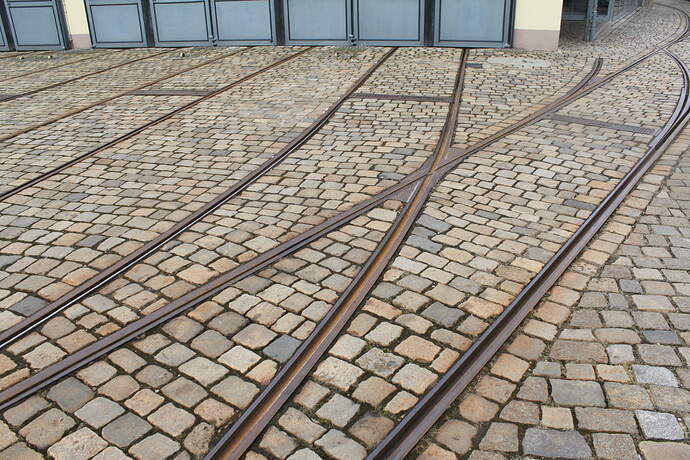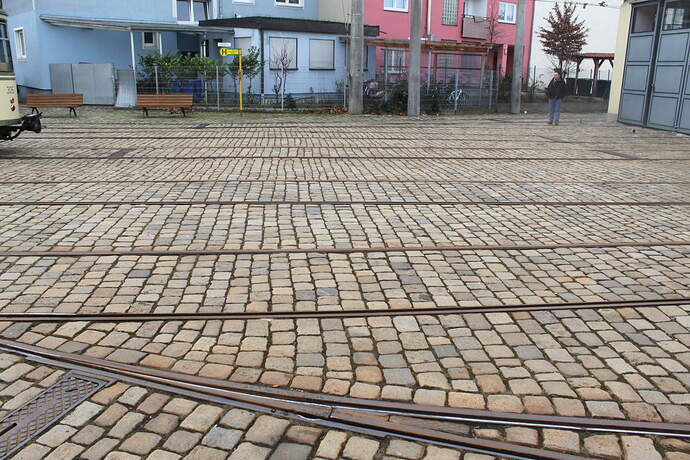How about we stop kidding around here; stop the time-wasting. Are you really engaged in such a diorama that this is actually relevant|? If so, let’s see the results.
I don’t have a digital camera. And if you don’t like me, why are you answering my posts? Do you run this forum? If not, take a hike.
Dear Tom, it’s nothing personal but dear God you do assail us with the abstract.
I come from the model railroad back ground. I’ve carved, in plaster, an 18" x 12" street scene. 1/48 scale. So I looked at this very question. Yes they do vary. A lot. But keep in mind that before WW2 they were neat and well worn. After the war they just threw them back together using what ever they could get their hands on.
It’s not a dumb question. Some of the answers may be?? Remember that folks here obsess over tank details. So why not the same attention to detail in a diorama?
In other words, you don’t run this forum, you’re not even a moderator, or you would have said so. I find my question quite legitimate, thank you very much, and if you don’t like my posts, nobody is forcing you to answer them. I think you’re being far more tiresome than anyone else here.
Im not trying to get mixed up here… but I felt like Brian’s first comment was meant more as a joke then anything serious.
I may be totally wrong here Im only saying this cuz I got a good laugh outta his first comment… 
Long_tom who are you referring to with your last post? I hope it wasn’t me. I’m sorry if it was but I thought I was supporting your very valid question.
bruce
Forgive me dragging the thread off-topic, but what are the ruins in the Frankfurt image (IMG 2667)? To my eye they look somewhat Roman…
Regards,
M
Just playing around. These are 1:35 scale Grossplastersteine 17/19 (Minimum/Maximum size) done quick and dirty on a piece of scrap XPS. So doabel in the typical “road pattern” with a resonable effort
Edit: The stones come out to 0.48x-0.54x cm. In the Q&D version I did the long lines with a ruler and then marked one of the rows for the short lines using 0.5 and 0.6cm. If I do more I would make something like a “template/jig”. Same if I do patterns or the smaller ones
Good eye, they are indeed Roman! But I don’t remember exactly what they are… ![]()
Lifted from the web;
“The Archaeological Gardens in Frankfurt Germany can be found next to Frankfurt’s Schirn Kunsthalle in the Old Town. These ancient Roman ruins, which were discovered in 1953, include thermal baths and Carolingian artifacts.”
Thank you, I’ll track them down.
Regards,
M
Smh it’s almost midnight here in Canada and I’m reading a debate about whether or not we should be using reference photos for paving stones. Y’all are wildin’ 
Students in Germany have the nasty habit of throwing cobblestones against the authorties. 
Here are some recent images of the Nuremberg Tramway Museum.
You can calculate the size of the stones by taking the width of the track.
From the German Wiki page quoted by Michael Brinkhues:
“Representation of the standardized natural stone formats”

So it looks like there is some sort of standardization now…
In my home town (NW England) surviving patches of cobblestones seem to be very irregular using natural cobbles taken from nearby beaches. There us a record of these being replaced on one particular street with wooden blocks, as it was frequented by miners going to and from their work and the genteel residents were troubled by the noise of the miner’s clogs on the cobblestones…
Regards,
M
Historical ones are more irregular or even “we have nice round stones in the nearby river” type in germany as well. Difference to UK who suffered less bomb/war damage: In germany most of the leftovers of this are in some castles or surviving old citiy centers like Monschau (Even there some is replaced by “regular size”)
Since many remote towns only got all streets paved in the 1950s/60s a lot is more the “standard sizes” and even more is covered with tar/asphalt.
I have Google Translate, Automatically translated to English.
It was to the person who complained about my creating this thread. Which is ironic because there are only a gazillion dioramas taking place in Berlin, especially the Battle of Berlin.
I mentioned having the book “Lost Berlin”, and the paving stone streets mostly had similar size paving stones. Why I asked what the actual size was.
I think it’s a fine question, but the answer is ‘it depends’ and ‘check photos of the site you’re intending to model’. Different streets had different cobbles, and the destruction of Berlin in 1945 meant that you could probably cover your cobbles with debris and call it a day.
